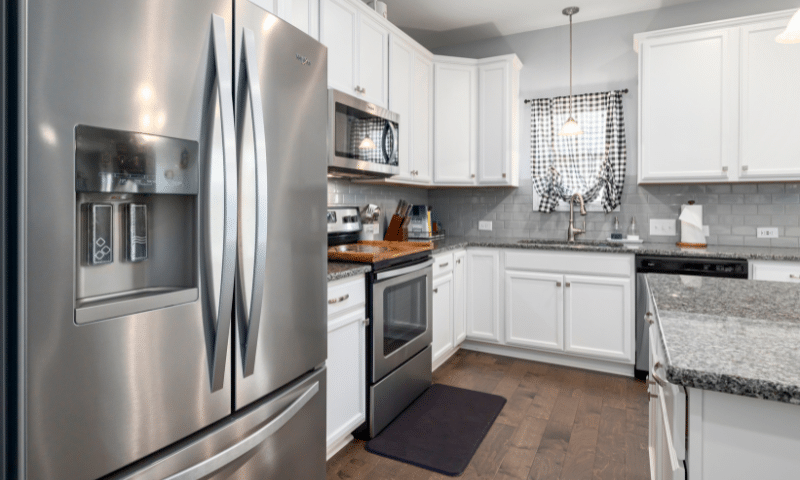- All
- Product Name
- Product Keyword
- Product Model
- Product Summary
- Product Description
- Multi Field Search
Views: 0 Author: Site Editor Publish Time: 2022-07-05 Origin: Site







KW, KWh And Kilowatt/hour: What Do They Mean?
On This Page
So, what is the difference between kW and kWh? Understanding which appliances require more energy (kilowatt-hours) to run Understanding your electricity bill How knowing the difference can help slash your energy bill? How do solar panels work in terms of kWh and kW? Become an energy efficiency saving expert
Recent News RECOMMENDED PRODUCTS
The difference between kW and kWh can be complicated and not usually something that is commonly known by the average household in Australia. Many energy experts still wrestle with the differences between the two.
But understanding these terms will give you tremendous insight into correctly reading your electricity bills and overall energy consumption.
It will give you the tools to manage your future consumption better and slash hundreds of dollars of your annual bills in the process.
The distinction between kW and kWh is relatively simple – kilowatt (kW) is a measure of power, while kilowatt-hour (kWh) is a measure of energy.
But this is also where things can get complicated and confusing. After all, aren’t power and energy the same thing?
There are significant differences, so before we delve too deeply into kW versus kWh, let’s understand what power and energy are and why they differ.
Energy: The simplest way to describe energy is the capacity to do work. We use energy daily for simple tasks like walking to the train station, cleaning the house, and mowing the lawn. We also use energy to fuel our cars and heat our homes and offices. It is measured in many ways, including the kilowatt-hour.
Power: Energy needs to be transferred at different rates depending on how much force is required to make something move. Power is the rate at which energy is transferred, which can be a little to operate a simple item like a blender or a lot to transfer enough energy to power a motor vehicle. It is usually measured in watts, with a kW of 1000 watts.
K represents kilo. it denotes “1,000.”
A Watt, a power unit, is denoted by the sign W.
Hour, the symbol for h, is a unit of time.
So, appliances will have a kW rating which will tell you how much energy they will need to run. Lightbulbs are an easy example as they have the wattage written on the box.
If you purchase a 100-watt lightbulb, it is going to take 10 hours for it to consume 1 kWh of energy.
It is essential, as electricity providers and resellers will charge you per kWh, and different states and plans have different kWh rates.
By learning the power requirements of your appliances in watts and kW, you can understand how much they will impact your electricity bill and adjust your usage accordingly.
These figures are meant as a guide only (as different appliances from different manufacturers vary), but this is the average power consumption of essential household appliances:
Blender: 500 watts
Toaster: 850 watts
Microwave: 1 kW
Vacuum: 1 kW
Dishwasher: 1.5 kW
Hairdryer: 1.5 kW
Clothes dryer: 3 kW
Wall air conditioner: 3.25 kW
Central air conditioner: 3.8 kW
Electric water heater: 4.5 kW
Electric water heater (tankless): 18 kW

Other appliances, like fridges and freezers, will have alternating wattage requirements as they will only operate at maximum capacity at specific day points. It is the same with computers and televisions when they go into “sleep mode”. While they will require less kWh to run, they will still take up a considerable consumption rate.
This list shows that small appliances like the average vacuum and hairdryer require a lot of power to operate. It also indicates that luxuries like tankless water heating options can be costly, giving tips on saving your electricity bill.
But there are plenty of graphs and measurements on your bill which can help you get a strong handle on your energy consumption and work out ways to reduce it.
These will also show your kWh usage over different times, including peak and off-peak windows. If you use much power in peak periods, you can reduce your usage and explore different tariffs and rates with your electricity provider.
Ultimately, you can also compare your kWh usage to other households in your area, so you can tell if you are using more power than your neighbours and work out strategies to be useless.
Now that you know the kWh metric, you can also use this to your advantage. Shop around, as different electricity providers and resellers will charge different rates during different periods, which will be listed in kWh. Compare them all – or use a comparison website – and get the best possible deal for your household.
When comparing prices, it’s crucial to consider service fees, discounts, and the cost of electricity per kWh used.
Finding the most excellent electricity deal requires energy literacy. Now that you are familiar with kWhs, you should routinely review your bills to see how your electricity usage compares and whether there are any savings to be had by cutting back on your use, locating a better deal, or doing both.
Can I cut back on my electricity usage? You can calculate what a single kWh is worth to see the energy used in your home.
Greater energy efficiency means that solar power will supply more of your electrical demands, lowering your power costs even further and maximising the benefits of feed-in tariffs, even if you are only partially powering your home with solar panels.